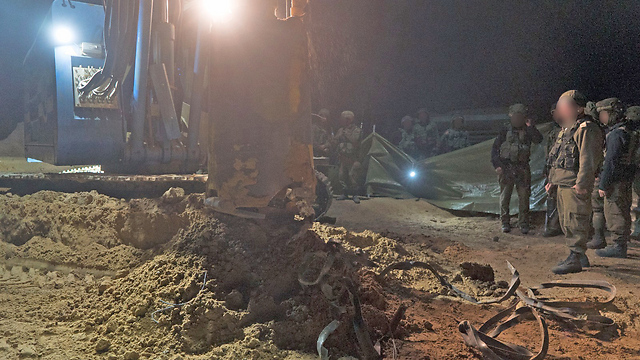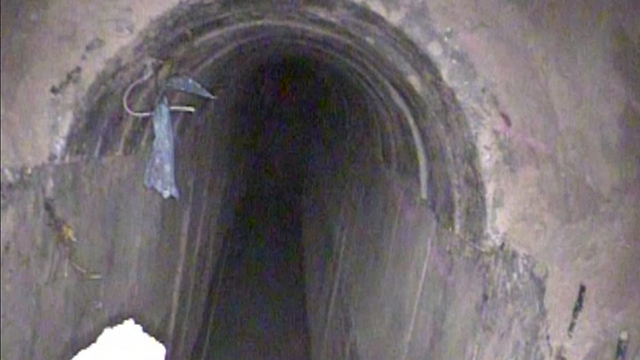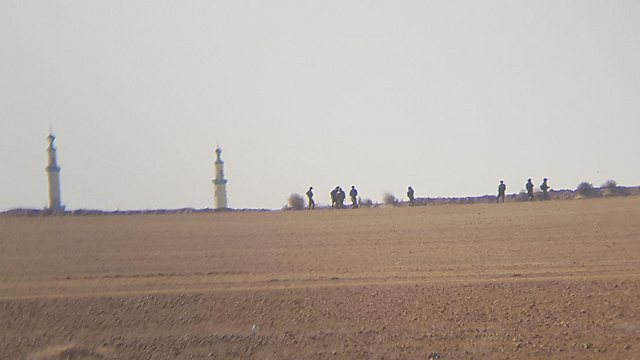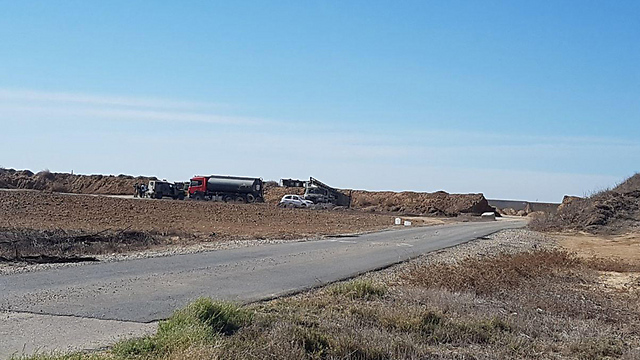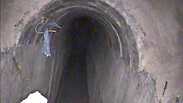
The ‘lab’ uncovering cross-border tunnels from Gaza
Analysis: The latest exposure of an attack tunnel on Israeli territory proves the IDF has successfully completed the underground ‘thwarting circle’; Hamas’s frustration, however, could lead to a temptation to escalate the situation in the strip before Israel unearths all the other tunnels.
This means the IDF has several new and likely groundbreaking technologies, not just for the discovery and detection of tunnel diggings, but also for taking hold of them and being able to neutralize them in different ways—not necessarily by blowing them up and killing the people working inside them.
The combination of different methods and the ability to use several of these technologies in each instance according to their feasibility in the specific case were made possible using a system that manages the entire underground thwarting operation in the Gaza Division and Central Command.
This system is basically a “lab,” which is the brain of the entire process and includes people or experts from different disciplines. Their combined activity and their analytic abilities—in conjunction with the technologies they use—invariably lead to results. It’s no longer about luck; it’s a method that deals with the underground threat from its very beginning to its full neutralization.
As far as I know, there are no technologies, processes or human apparatuses in the world that know how to do what is being done now against the underground threat in the Gaza Strip, and perhaps in other places as well.The tunnel uncovered Sunday likely isn’t the last successful case to be reported by the “lab” sooner or later. Hamas also understands that Israel has developed a method that may soon deny the organization its ability to use cross-border tunnels to target IDF forces and Israeli communities and citizens east of the Gaza border fence—in other words, within Israel’s sovereign territory. If this method is indeed up and running, Hamas will be deprived of an important offensive ability which it has been planning to keep using in the next round or war with Israel.
These facts will, without a doubt, frustrate Yahya Sinwar and Mohammed Deif, the leaders of Hamas’s military wing. The two are avid supporters of the use of tunnels as an offensive measure against Israel, as well as of fighting the IDF inside the strip in case of an invasion.
Frustration as a result of the Israeli underground thwarting system could be reflected on two opposite levels. The first level is outright abandoning the underground system, following estimates that the barrier being built along the border fence and the Israeli detection and thwarting systems have turned the tunnels into an inefficient offensive measure that Hamas would anyway soon be lose. The conclusion, therefore, would be to let go of this measure and look for something else.
The second direction a Hamas response might take is rushing to make use of the attack tunnels already in place—in other words, quickly completing and using them before they are cut off by the barrier being built by Israel or before they are detected and neutralized by the IDF.
Hamas has no interest in escalation
There is no way of knowing how Hamas’s military wing will respond at this stage. Hamas has no interest in escalation at this time, as it hopes the internal Palestinian reconciliation and its reconciliation with Egypt will finally materialize, ease the Gazans’ distress and eventually lead to the opening of the Rafah Crossing. Hamas is also hoping to receive aid from Iran.
At the moment, Hamas is interested in maintaining calm, fragile as it may be, to prevent the strip’s residents from turning against the organization when their distress grows upon the arrival of winter rains, and to allow the military wing to move on with its preparations and arming efforts for the next conflict.
Hamas’s frustration, however, seems to be growing, and frustration could be followed by a temptation to escalate the situation in the strip before Israel uncovers all the tunnels and turns the underground threat into an inefficient tool.
The way the tunnel was neutralized this time deserves our attention too: Without bombing it, without using explosives and without Palestinian casualties. This is partly the result of the lessons learned from the tensions that followed the detonation of the previous uncovered tunnel, which had been dug by the Palestinian Islamic Jihad. That detonation could have led to escalation were it not for Egypt and Hamas’s efforts to convince the Islamic Jihad to avoid any major activity to avenge the tunnel’s exposure and the killing of its people inside of it.
This time, the tunnel was neutralized using quiet measures, likely also in light of the growing tensions following President Donald Trump’s Jerusalem announcement. Israel wanted to uncover the tunnel and neutralize it without almost forcibly pushing Hamas to escalate its response. A combination of the growing incitement on Jerusalem and feelings of humiliation, insult and revenge following a loud and lethal exposure of the tunnel could have sent the Gaza Strip and the Gaza vicinity into an escalation neither side was interested in.
It’s encouraging to see the IDF has a very diverse and efficient toolbox, allowing it to adjust its physical tools against the underground threat to the political conditions and the state of mind in the region.
A Hamas cross-border tunnel is a serious violation of Israeli sovereignty and can be considered an offensive activity for all intents and purposes, requiring a strong and firm response from Israel. The IDF, however, seems to believe that its powerful response to Friday’s rocket fire from the strip—which left two Hamas men killed—was sufficiently painful and destructive, which is why the tunnel exposure does not require another powerful response.










